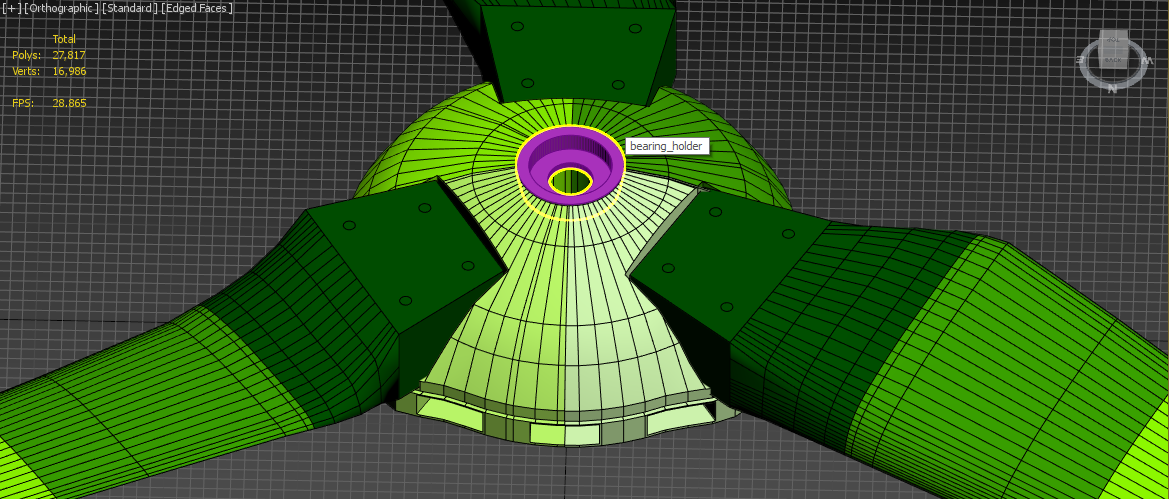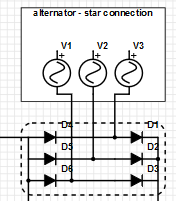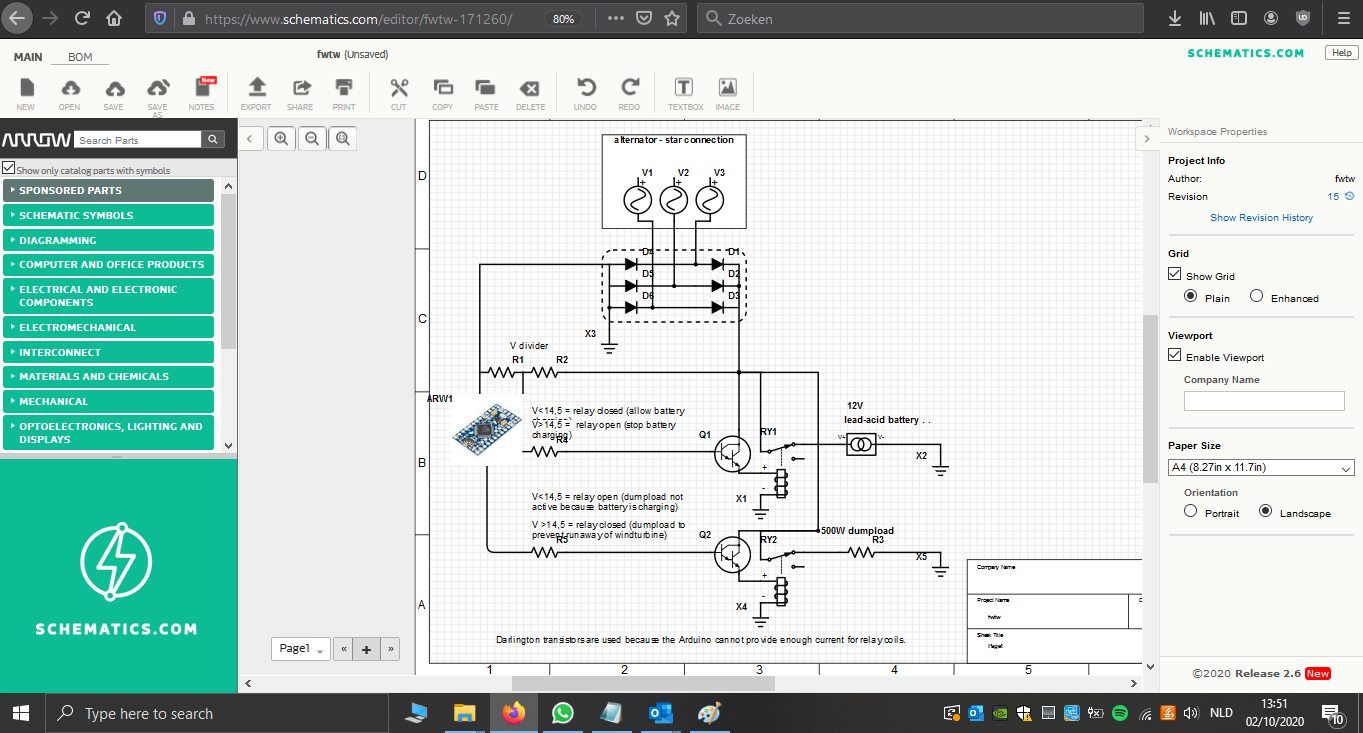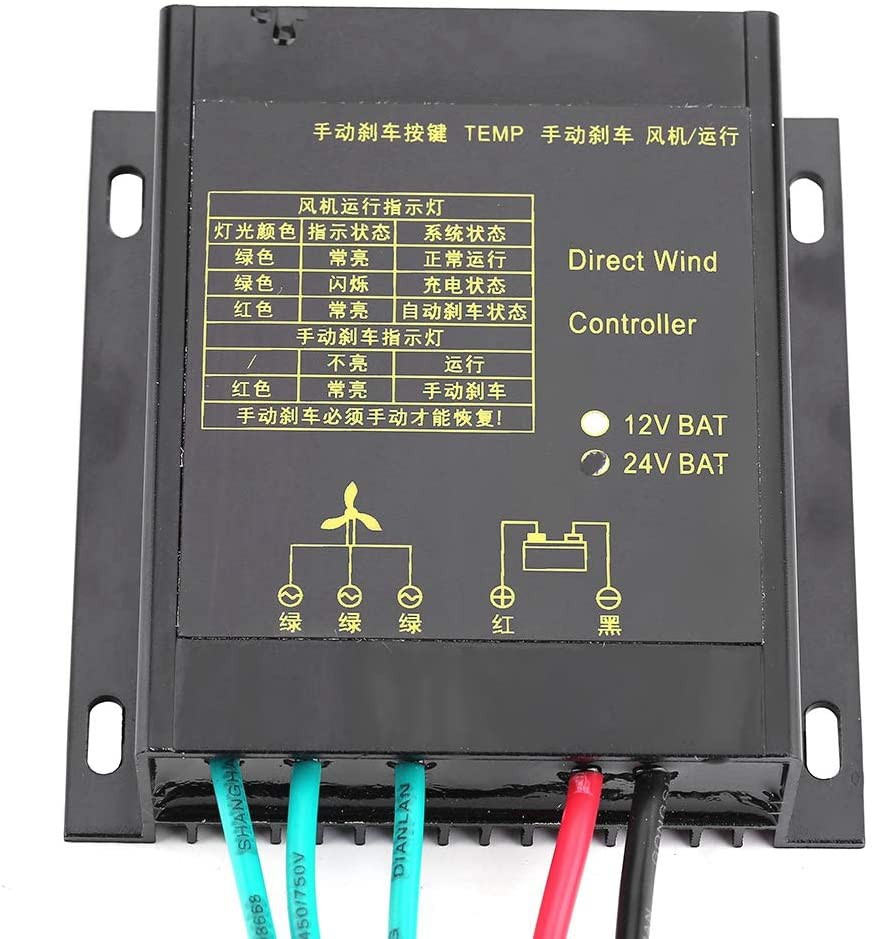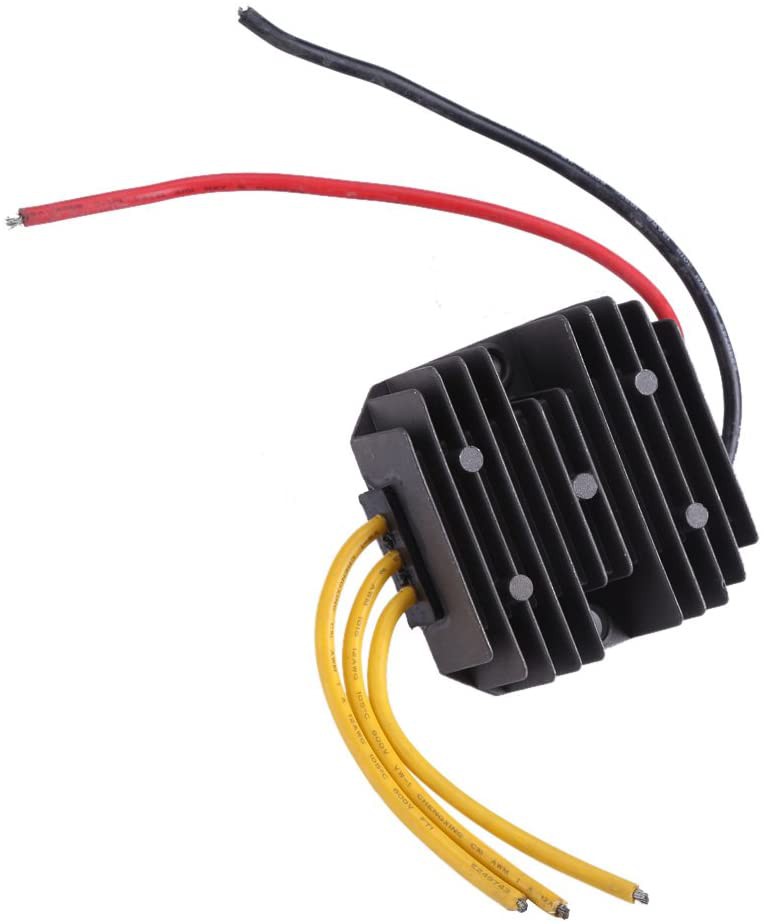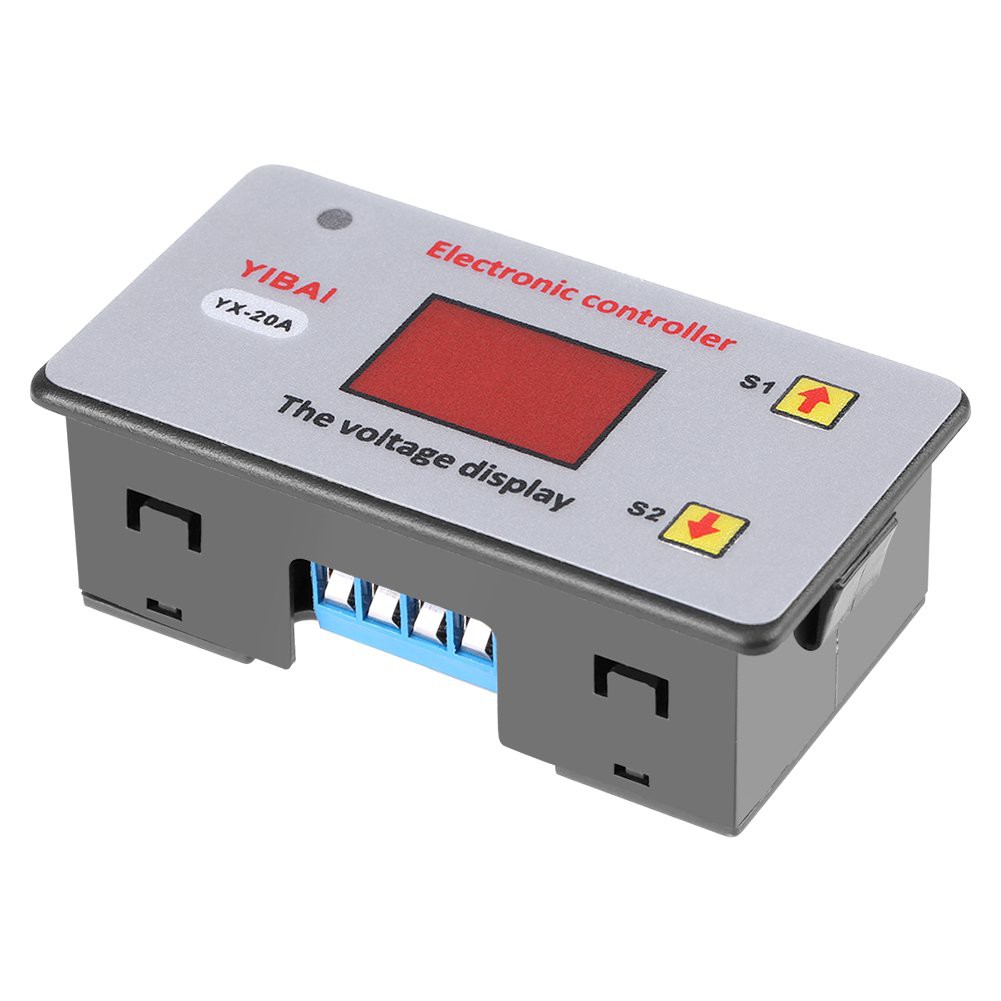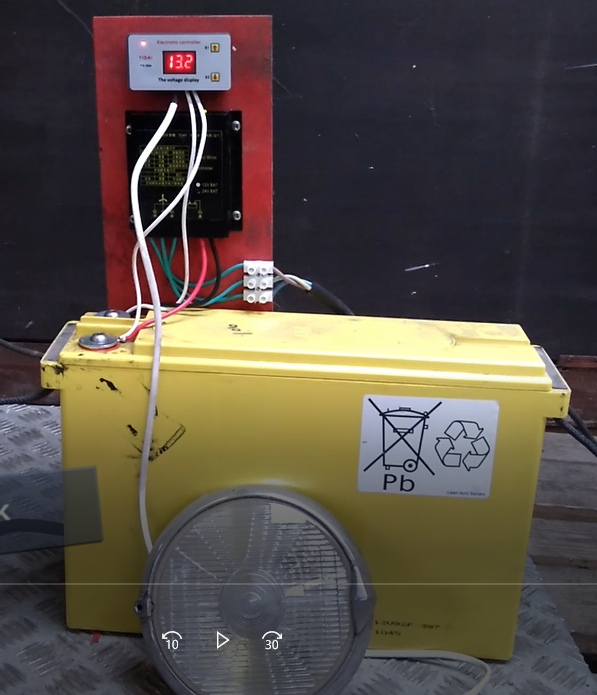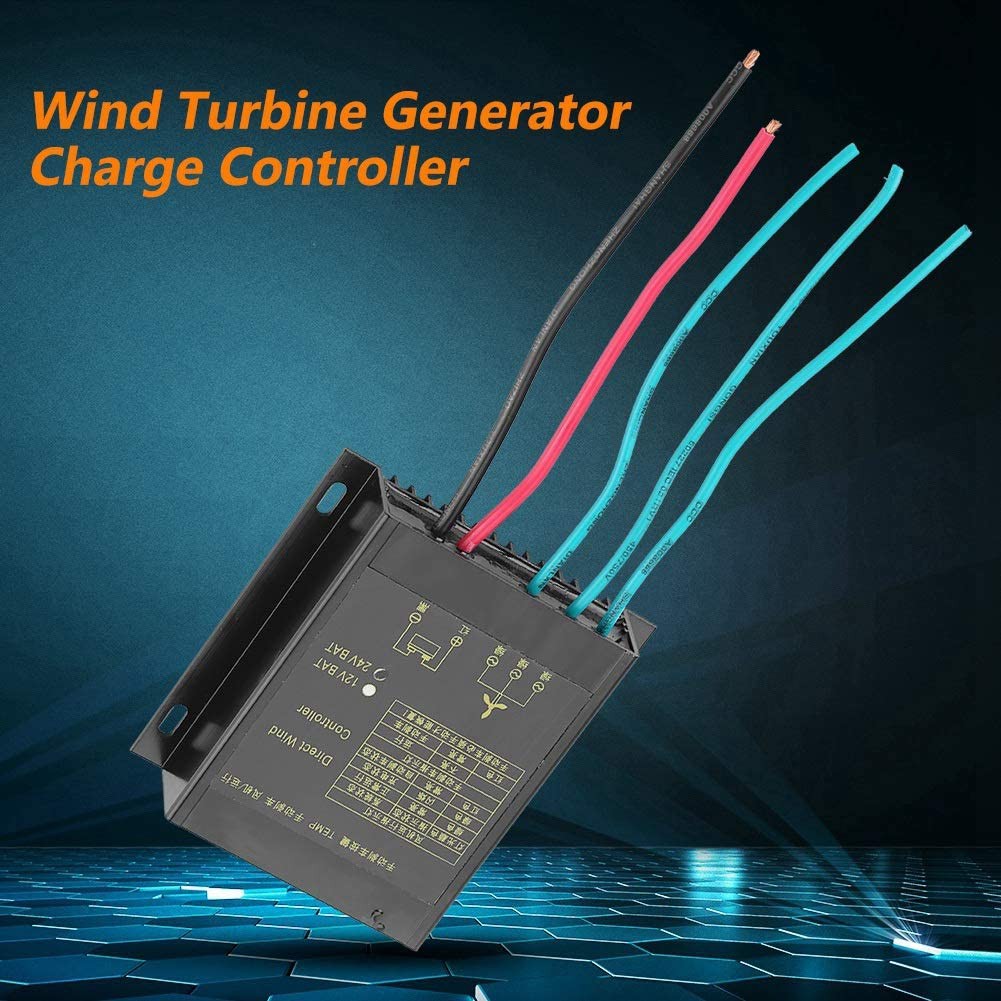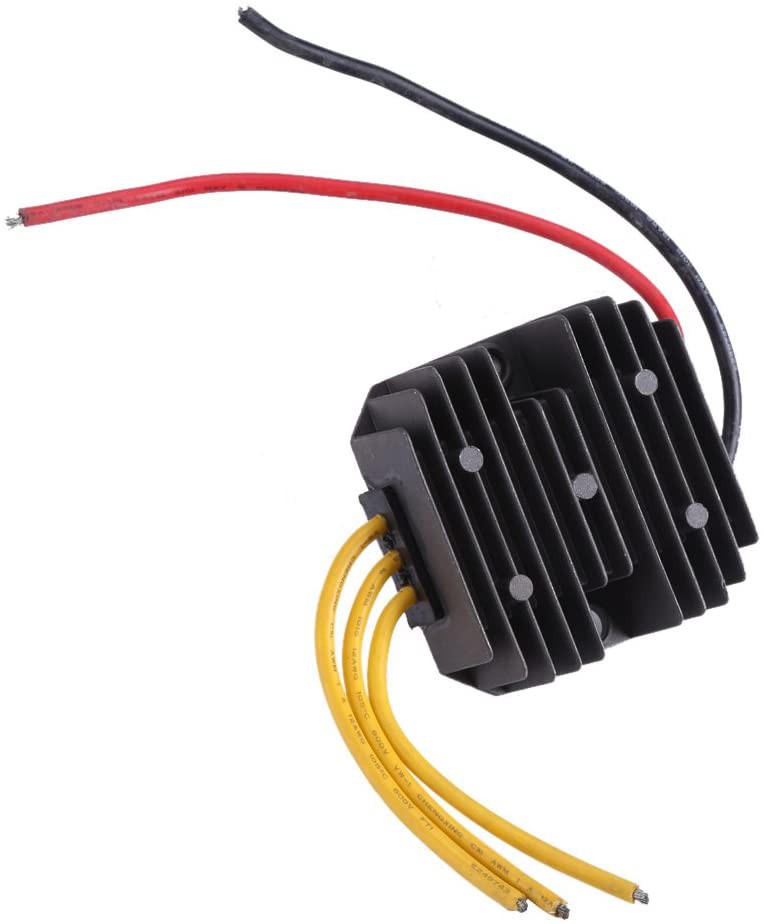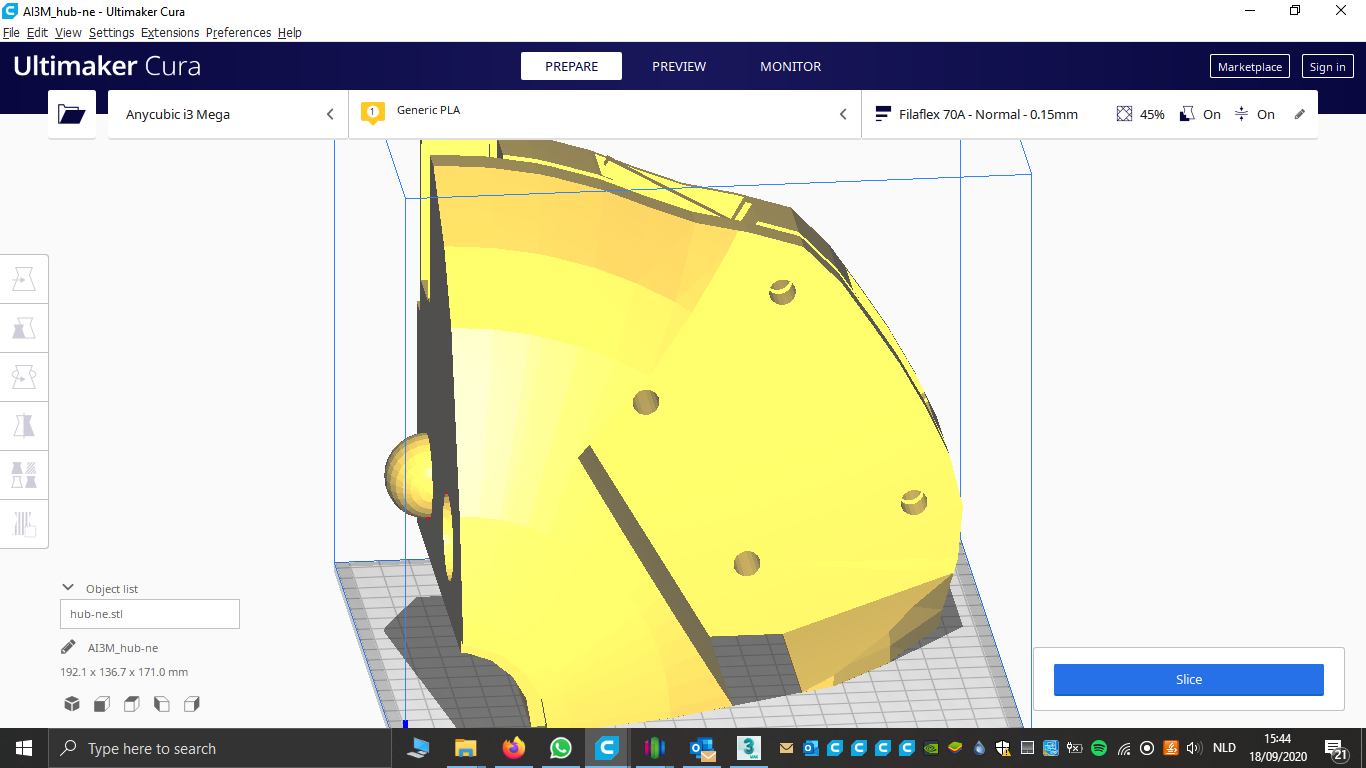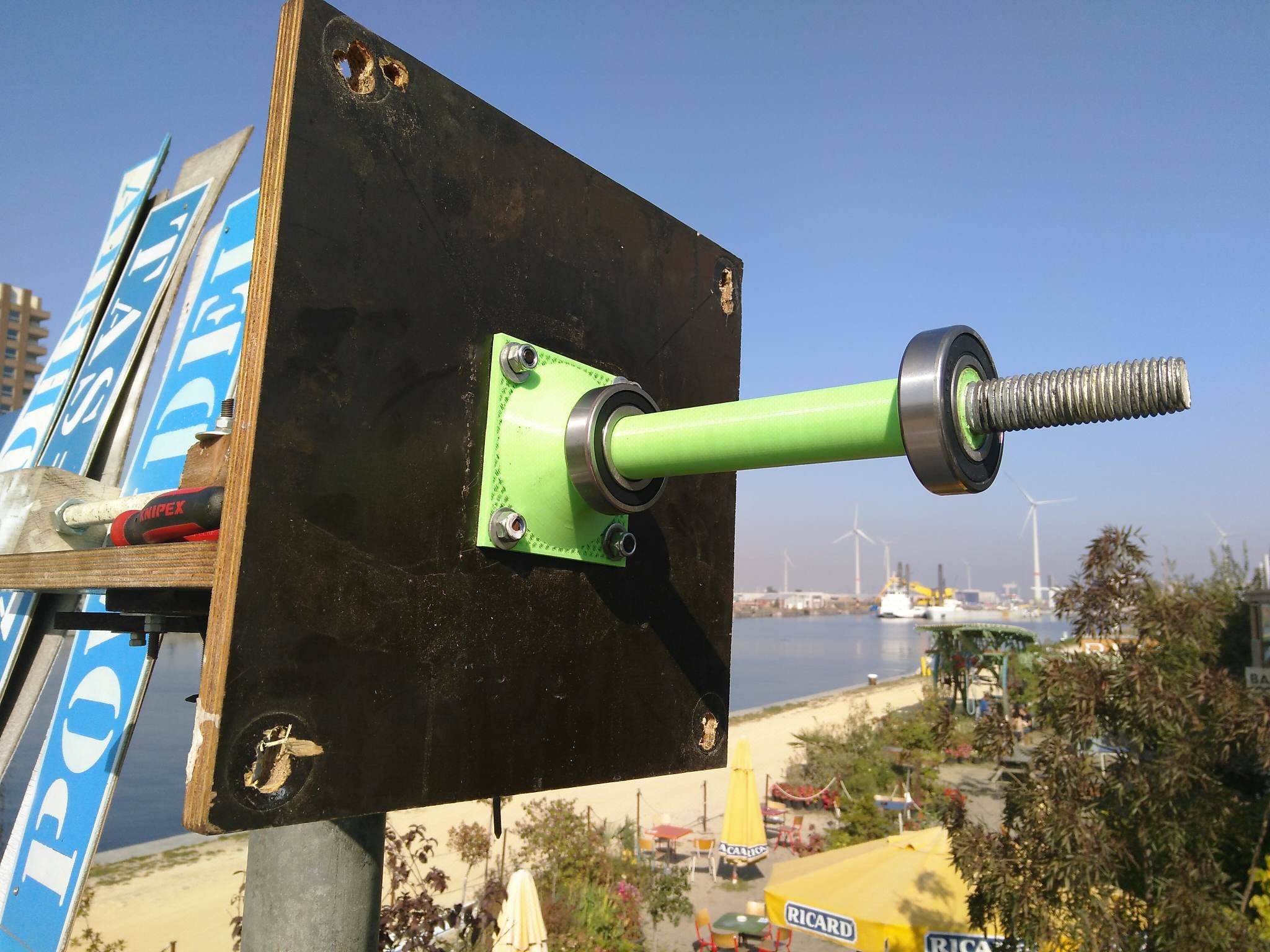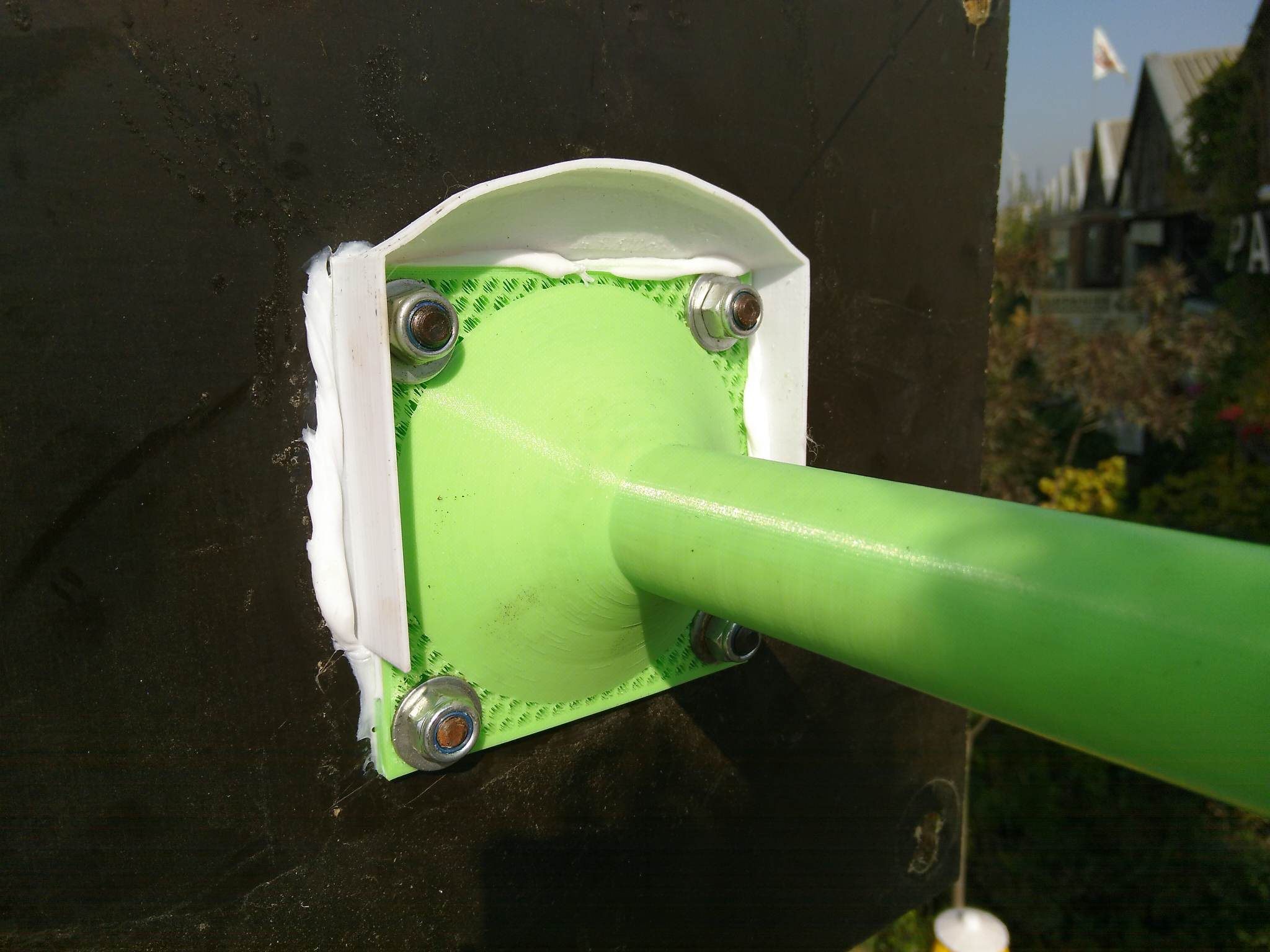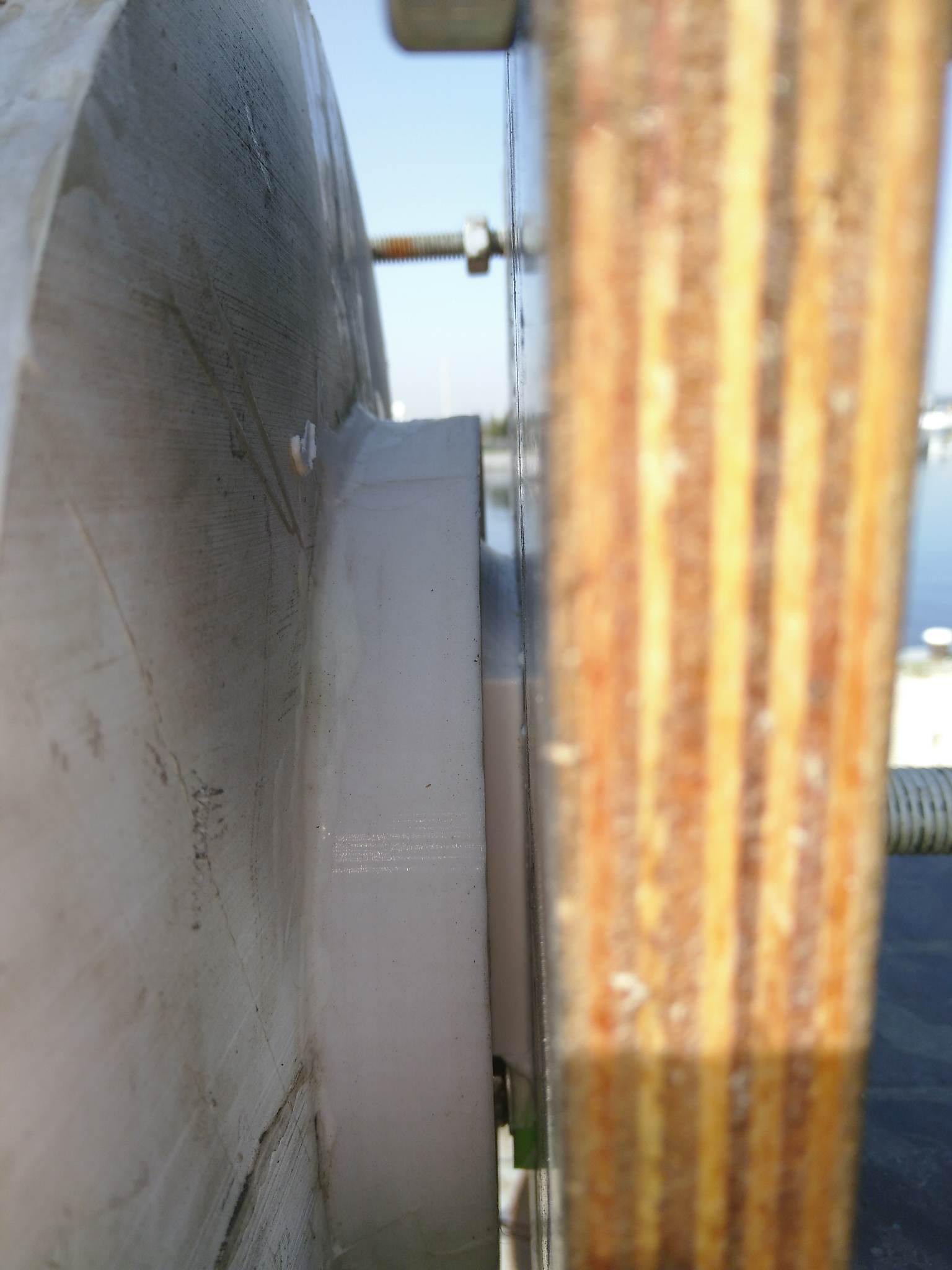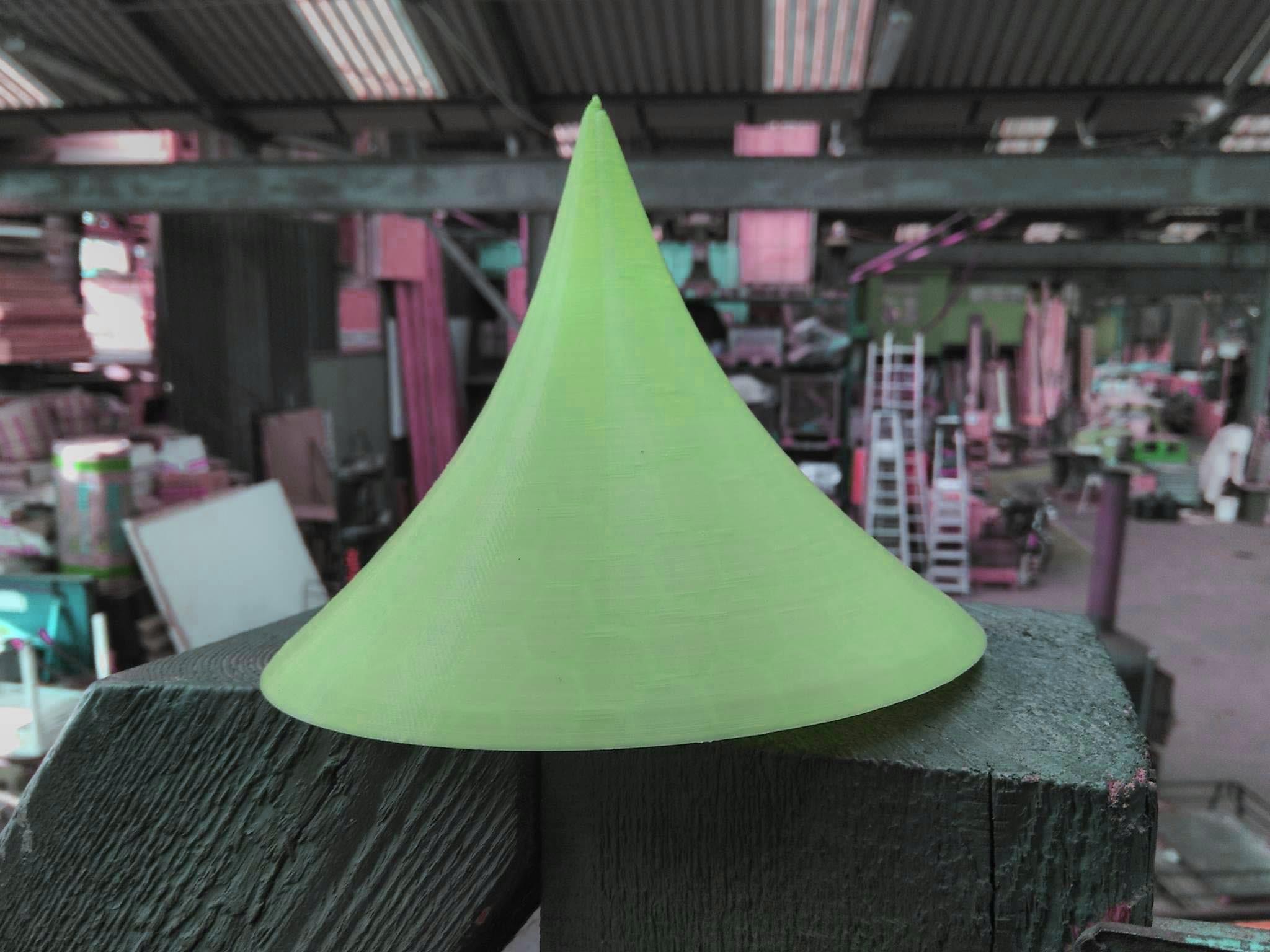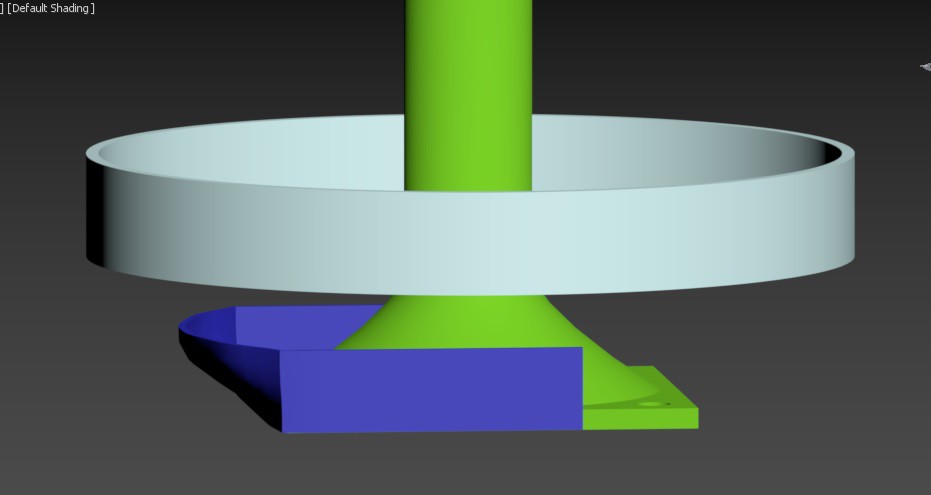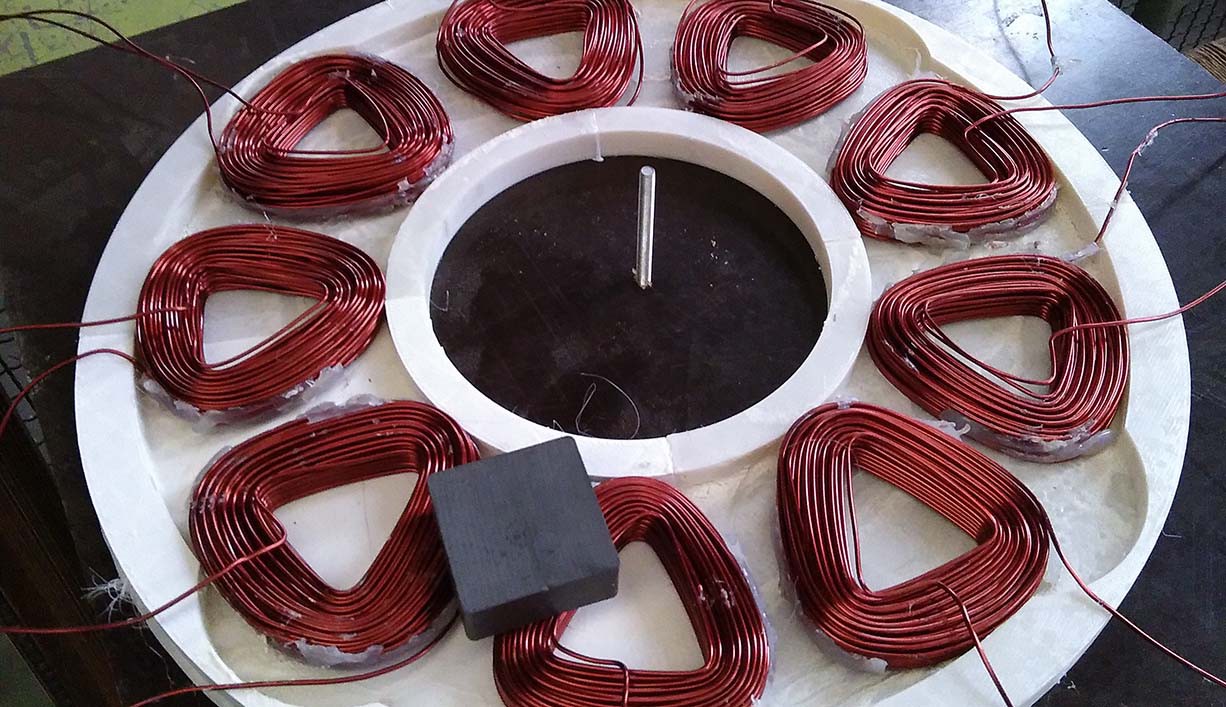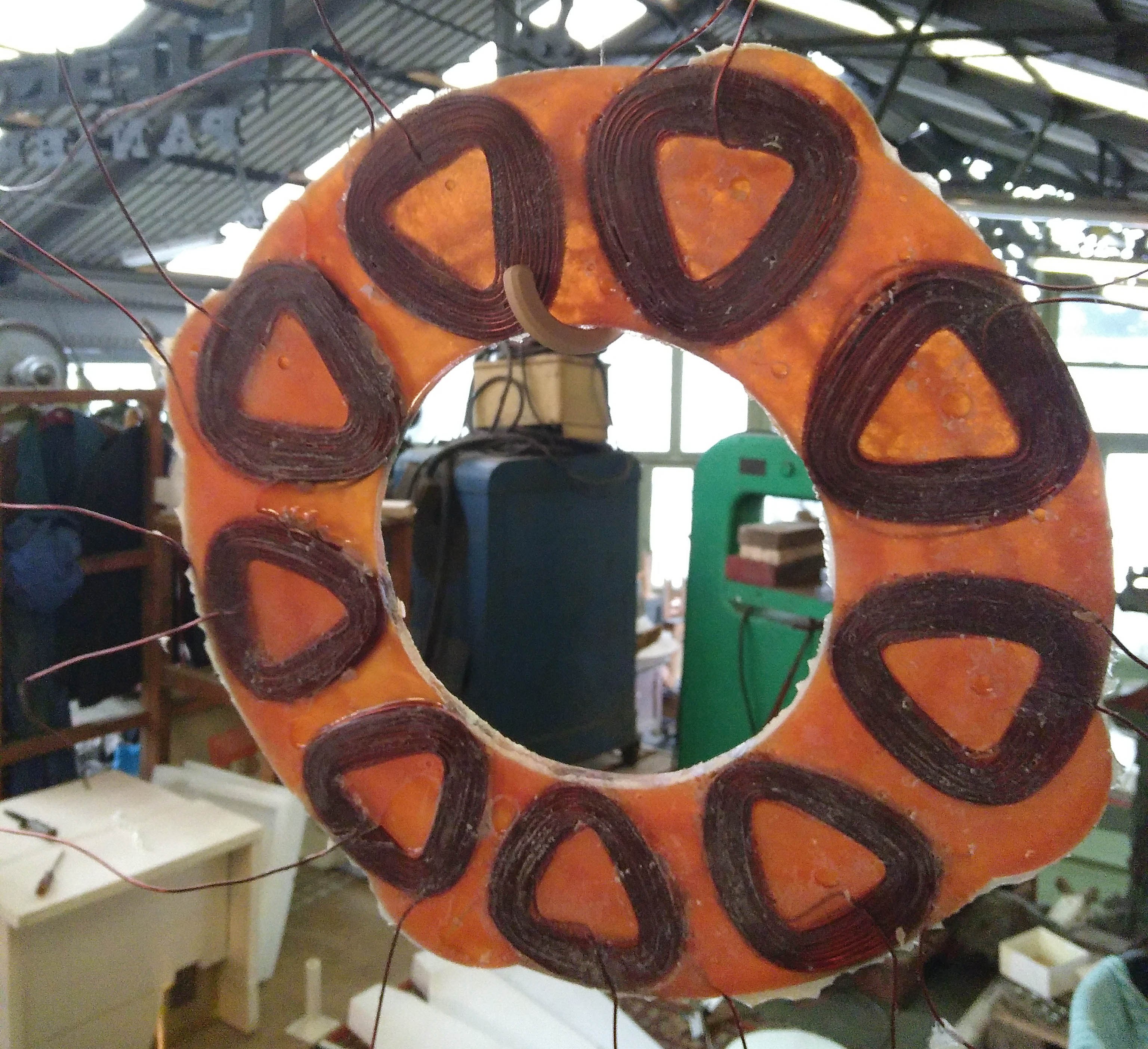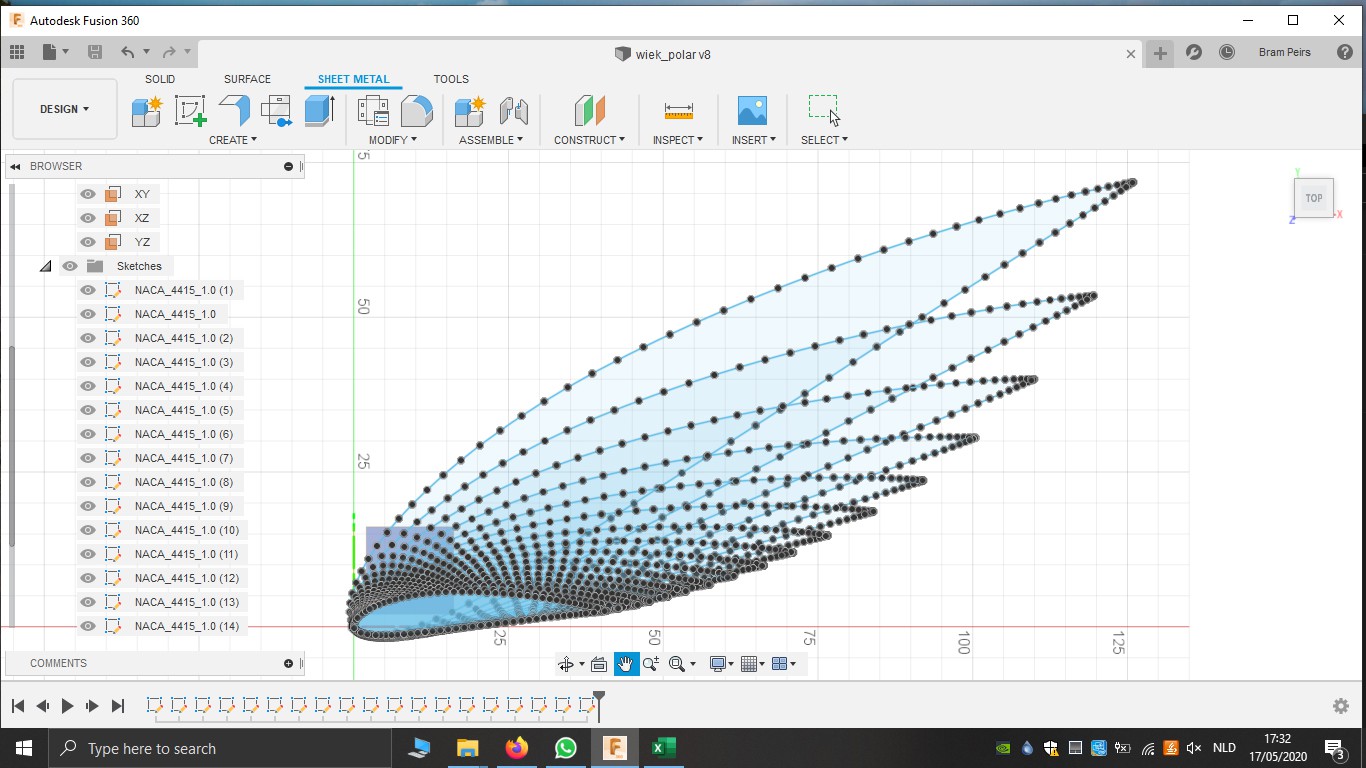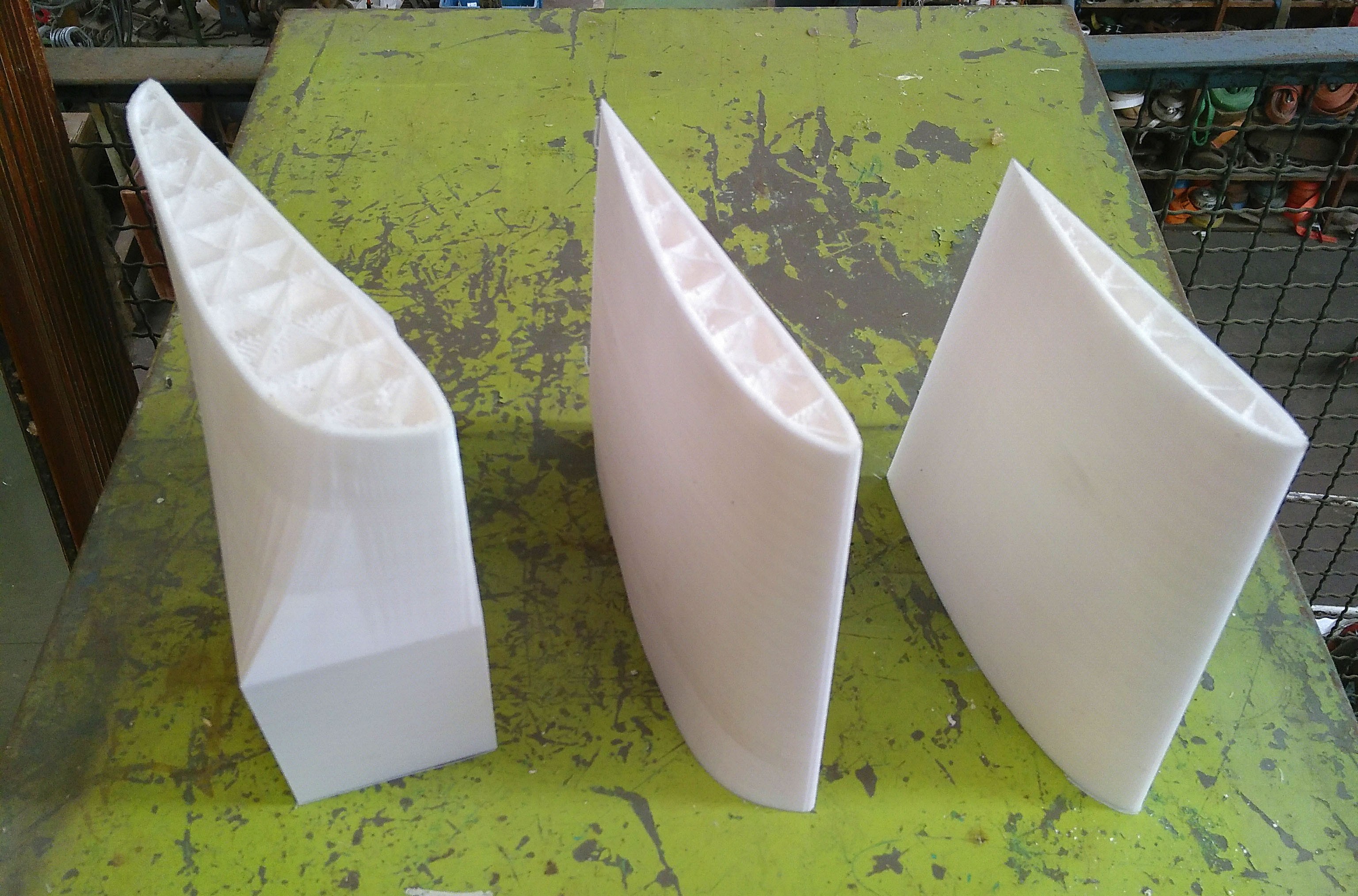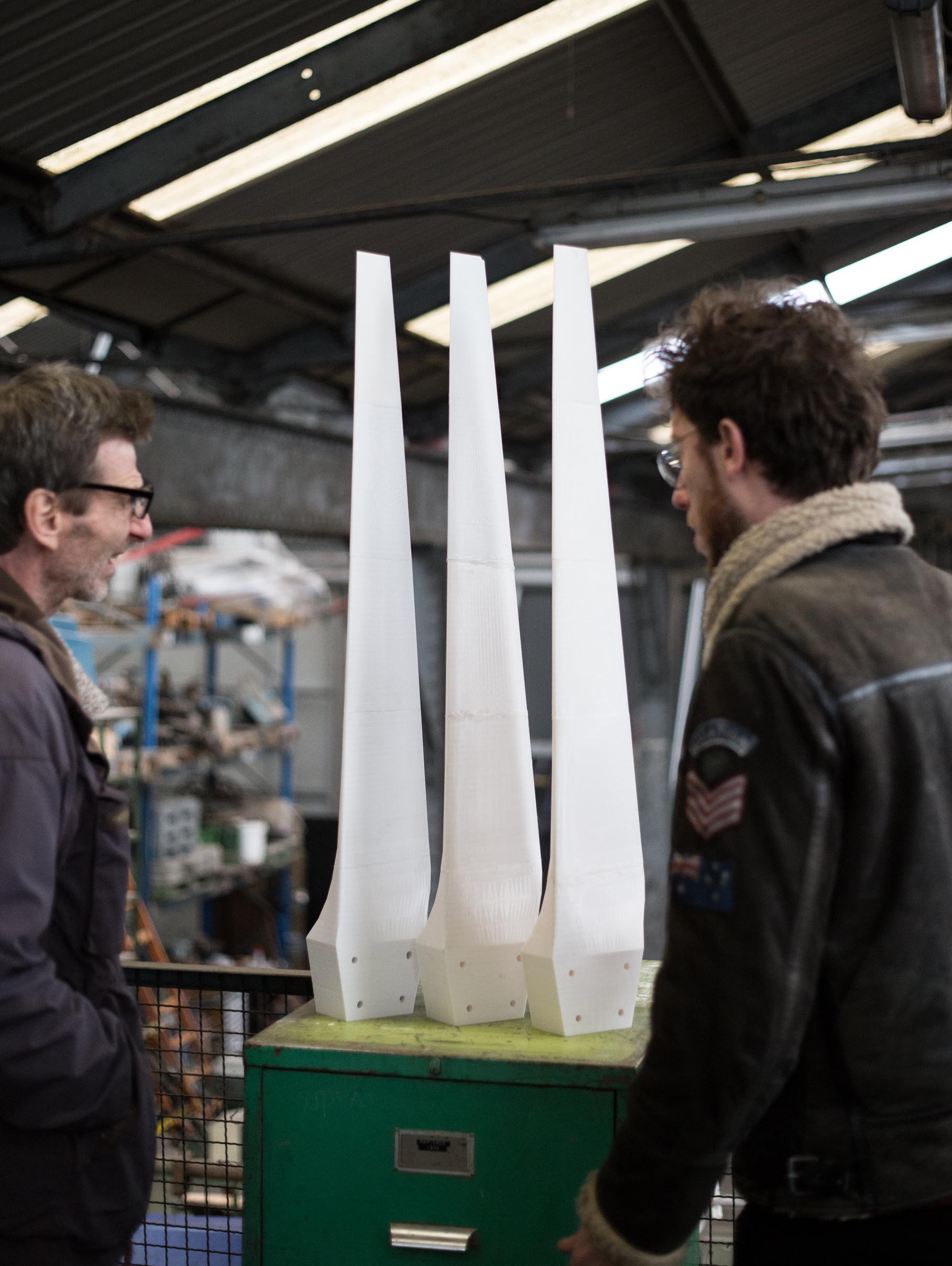-
Bearing margins
10/03/2020 at 17:19 • 0 commentsFor now we had a little play on the margin between the bearing and the generator. The reason for this is that diameter of the hole for the bearing can vary a few tenths of a mm, depending on how much glue is used. Therefore we designed a custom piece that can be printed in one part so that it always will fit perfectly. It is shown below in purple:
![]() The bearing is placed into the part like this:
The bearing is placed into the part like this:And afterwards both are welded into the generator. It's also possible and maybe even better to wait to insert the bearing until the holder has been welded into the generator:
-
More on wind turbine controllers: to China or not to China?
10/02/2020 at 12:33 • 0 commentsA windturbinecontroller for charging batteries needs to have 3 main functions:
- 3 phase rectifier: to convert the 3-phase AC into DC for the battery, a diode bridge is needed:
![]()
- charge controller: the battery needs to be charged at the correct voltage (13,5V-14,5V)
- discharge controller: deep discharge damages the battery, so it has to be switched off at the appropriate level (around 12,6V unloaded at room temperature).
- dump load: when the battery is full, the rest of the power needs to be diverted to prevent overcharging the battery. The most common application is to dump it into resistors. Just disconnecting with a switch is not enough as it would make the windturbine runaway with a too high RPM, leading to self-destruction.
We designed our own controller to provide these functions, on the very handy website of schematics.com. (We are not affiliated)
![]()
Although this controller worked fine, it set's you back 25EUR in parts, labour not included. That is if you don't make any mistake.. Therefore the cheap (Asian) controllers we mentioned in our previous post are also worthwile looking into. There are a lot of deviations of the same controller to be found on marketplaces like Alibaba, Amazon, Ebay,.. Often relabeled with a fancy brandname and then sold for twice or even quadruple the original price.
We ended up buying this one for only 10,89EUR on Amazon.de: "Zerodis Wind Charge Controller Wind Regulator Charge controller with self and hand brake function Waterproof 400W (12V)". With the use of the Google Translate app and some basic reasoning we were able to understand the labeling and how the controller works:![]()
![]()
It works fine and even has a button to manually control the braking (=dump load) for maintenance.
Another controller that came in was the "Zerodis 12V / 24V 300W wind turbine generator lader controller". It's named Zerodis, but actually it was just the cheapest rebrand we could find, underneath it's all Chinese. It came in for 28EUR, and there is clearly a quality difference: the cables are thicker, and the heatsink of the dump load is also way bigger dimensioned.
![]()
It works just fine (for now?) and runs cooler than the other controller thanks to the bigger heatsink.
Unfortunately, none of these commercial controllers have a function that protects the battery agains overdischarge. Therefore we added an additional unit, bought seperately for around 10EUR on Amazon:
![]()
It does the job but relates battery charge only to the battery voltage. This means that if you connect a high power load, the voltage also drops, triggering a false 'empty battery' alarm. There are more intelligent discharge controllers on the market or to be made, that also measure the current that the load is drawing, but these cost a multitude of the price.
This is how it looks like al wired together. (The 3-phase current from the windturbine comes in through the thick black cable)
![]()
-
Happily spinning again!
09/29/2020 at 17:44 • 0 commentsAfter installing the new bearings the Propel-E 450 is spinning happily again, and has survived some strong winds!
We are also testing some charge controllers. A cheap one and a very cheap one! More on the coming log!
![]()
![]()
-
An update from our Patreon supporters
09/23/2020 at 10:52 • 0 commentsSome of our Patreon supporters come to us with really great ideas! For example to make puzzle-like structures to ensure all pieces line up properly when glued together. This is the addition that one of our supporters made in OpenSCAD, unfortunately resulting in a non-manifold model.
![]()
We found the idea so great that we decided to implement it in our models (made with 3ds Max). The new versions will soon be online!
![]()
And the end-result:
![]()
Another addition was alignment pieces for the stator mould. Unfortunately this means 8 parts for the mould instead of 4, with the advantage of decreasing the room for error to almost zero! Which do you think is best? Leave your comment below!![]()
-
Weatherproofing completed! :)
09/22/2020 at 15:34 • 0 commentsNo wind and a sunny day here in Belgium, ideally to work 6m height to install the new parts on the windturbine!
The new bearings that are more waterproof, showcased on the axle that is now only 30mm diameter instead of 35mm which should still be plenty of strength.
![]()
The white part is a raincap to insure that no rain will get on the axle and the bearings:![]()
The raincap shoves into the big white ring:
![]()
We also made an additional cap to protect the front bearing:![]()
-
Broken bearing! Weatherproofing
09/17/2020 at 15:59 • 0 commentsSome water got in and has been centrifuged from the rear all the way to the front damaging the front bearing:
![]()
Therefore we made some extra parts that will make the backside more weatherproof. The white ring is glued on the backside of the generator, and the blue cap is glued on the axle. When installed, the white ring will be over the blue cap, ensuring no rain get's in along the backside.
![]()
We also replaced the previous bearings (that were completely open) by sealed ones of half the price!
![]()
-
Test run!
08/30/2020 at 10:30 • 0 commentsSome footage of our testrun! The only thing we could not test here are the gyroscopic forces, that are induced when the windturbine is rotated around it's own axis (through the use of a tail).
-
Construction of the alternator
08/27/2020 at 15:21 • 0 commentsThe 9 coils (1,6mm wire) are cast into a disk that will be stationary. Around that disk, there will be 2 rotating parts with the magnets. More on that later! Firstly, a sneek peek of the coils being cast into polyester resin. A 500ml can with red-colored hardner was the cheapest at Amazon, only 12,56EUR!
![]()
Which becomes this after 24h of hardening:
![]()
-
More on bladedesign...
08/25/2020 at 16:29 • 0 commentsWe opted for fixed blades, meaning the blades are attached to the axle. Disadvantages of adjustable blades, like being prone to damage and increased material and maintenance costs do not add up to the advantage of having the blade angle perfect everytime. Also, a near-perfect blade can be made by twisting the blade along its length. Because of this, fixed blades have become the mainstream in the wind DIY-community.
To be sure we have the correct twist and taper, we used Hugh Piggot's Blade Design spreadsheet. Furthermore we choose the NACA 4415 airfoil for its good suitability for small windturbines.
We modeled the entire blade in Fusion360, with some small tweaks in 3DS Max:
![]()
-
Will these blades hold?? - Worlds first 3D-printed windturbine of this size!
08/24/2020 at 18:05 • 0 commentsWe came a long way. Developing blades of 1m length that can be printed on any household printer required quite some research. Firstly, we chose PLA because it's stiffness, printability and being environmentally friendly.
![]()
Also, after some tests and research, we found a good way to glue the parts together. We need to say there is a lot of misinformation on the internet about this. Many people recommend MEK to join the parts, but MEK only makes the PLA soft. It doesn't really dissolve in it. DCM (DiChloreMethane) does this excellent, and you can make your own gap filling glue with it. This means you can chemically weld the parts together and they will be very strong!
![]()
The blades ended up very strong indeed! We did several tests by putting weight on the blades and they always broke next to the joint!
![]()
Propel-E 450 | A very powerful windturbine
A 2m windturbine made from corn! Completely 3D-printable and open-source.
 Bram Peirs @ FW2W
Bram Peirs @ FW2W